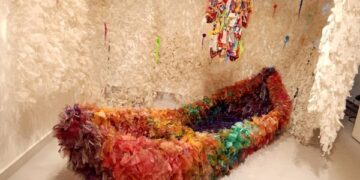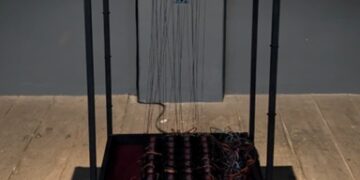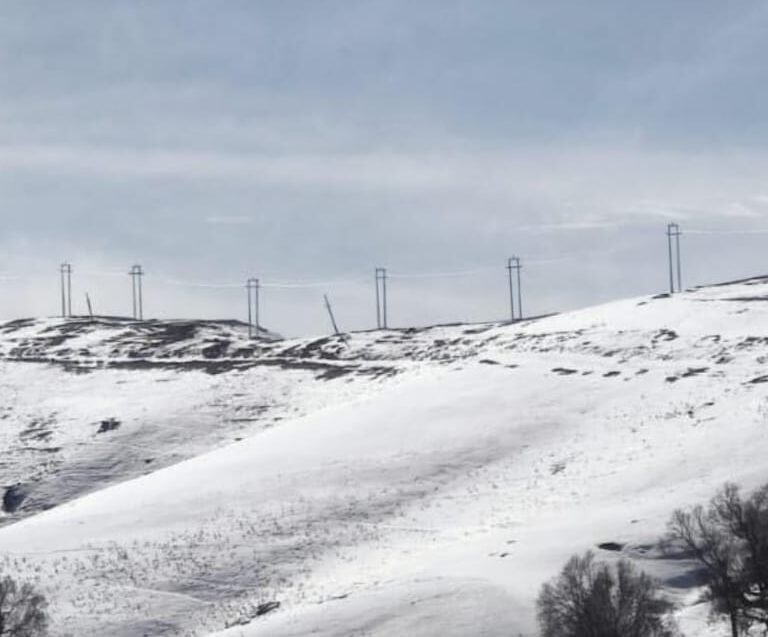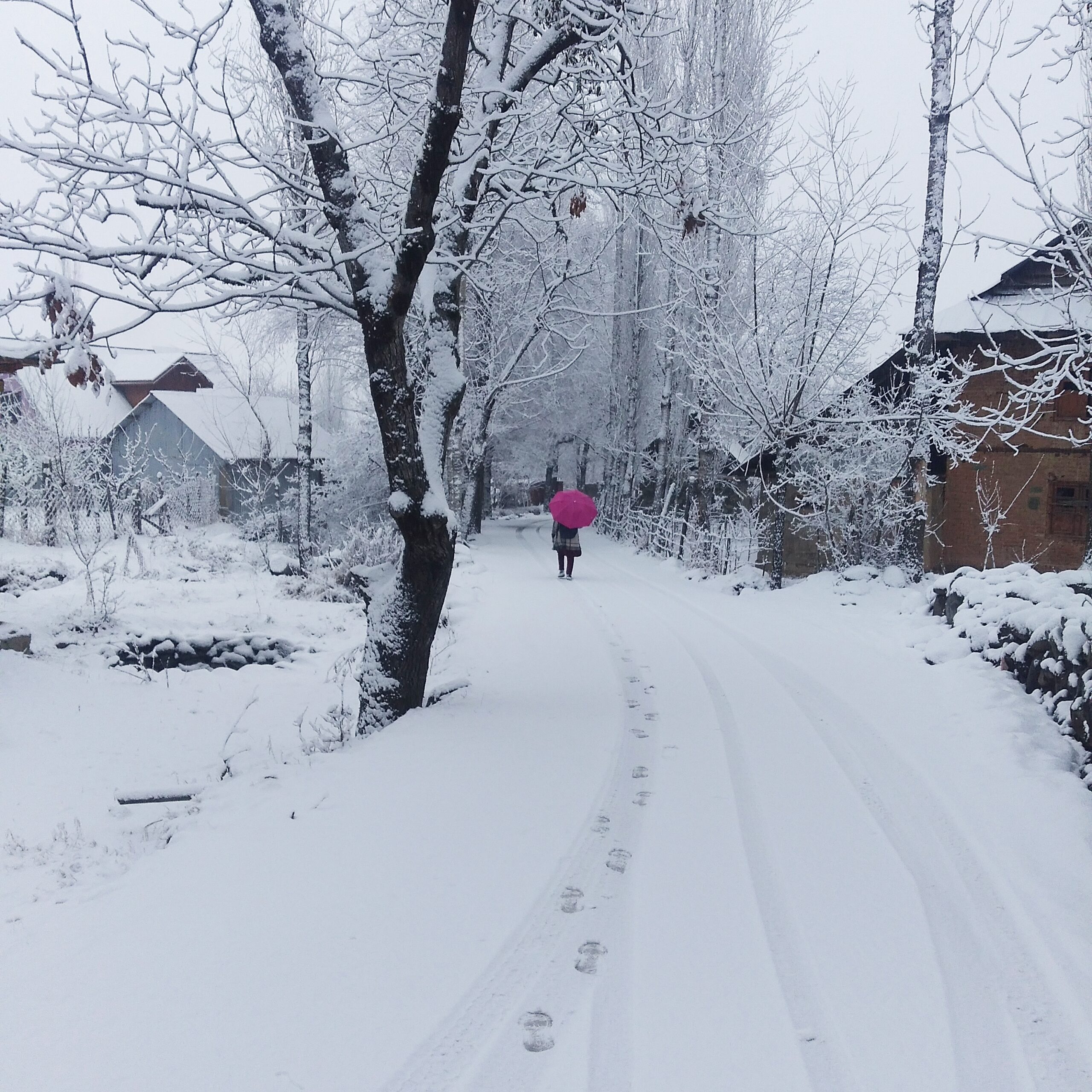In recent years, climate activism has taken a bold turn, with groups like Just Stop Oil targeting renowned artworks to draw attention to environmental issues. These provocative actions have sparked global debates about the intersection of art, protest, and the urgency of climate change.
Throughout history, art has been a powerful medium for challenging norms, sparking debate, and advocating for change. In recent years, climate activists have taken this a step further by using masterpieces as a stage for their urgent message. Groups like Just Stop Oil have made headlines by targeting world-famous artworks to draw attention to the environmental crisis, forcing the world to question not only the role of protest but also the value of cultural heritage in the fight for a sustainable future.
One of the most striking incidents occurred in October 2022, when Just Stop Oil activists threw tomato soup over Vincent van Gogh’s Sunflowers at London’s National Gallery. Though the painting was protected by glass, the act left a lasting impression, prompting discussions about the lengths activists are willing to go to in order to demand action against fossil fuel dependency.
This was not an isolated event. In June 2022, demonstrators glued themselves to van Gogh’s Peach Trees in Blossom at the Courtauld Gallery, demanding an end to new oil and gas licenses in the UK. Later, in July, another group attached themselves to Giampietrino’s The Last Supper at the Royal Academy in London. The tactic is clear: use cultural icons as leverage, creating an unavoidable spectacle that forces people to engage with the climate crisis.
The strategy is polarizing. On one hand, supporters argue that these non-violent demonstrations are necessary disruptions. Traditional protests often fade into the background, drowned out by the relentless cycle of news and social media. By targeting beloved artworks, activists create a conversation that extends beyond climate-conscious circles and into mainstream discourse. After all, if people are more outraged by the defacement of a masterpiece than by the destruction of ecosystems, perhaps priorities need to be reassessed.
On the other hand, critics see these acts as counterproductive. Damaging—or even appearing to damage—artworks that are cherished globally risks alienating potential supporters. Many argue that the cause is just, but the methods risk reducing the credibility of the movement. Furthermore, museums and galleries are often already engaged in sustainability efforts, making them an ironic target for protest.
Yet, history suggests that radical activism has long been a catalyst for change. From suffragettes slashing paintings in the early 20th century to political graffiti on war monuments, public outrage often precedes progress. Whether Just Stop Oil’s methods will be remembered as necessary provocation or reckless vandalism remains to be seen. However, one thing is certain: by making the climate crisis impossible to ignore, they have reignited the age-old question—how far should activism go in the pursuit of justice?
In an era where the planet’s future is at stake, the debate continues. Is using art to advocate for climate action a necessary disruption, or is it a misguided attack on cultural heritage? Either way, masterpieces have once again become more than just symbols of artistic genius; they are now tools in the fight for survival.
Art in the Age of AI and Machines
In a world where 3D printers can sculpt intricate designs in minutes, painting apps can turn anyone into a digital Picasso, and AI can generate stunning visuals with a single prompt, it’s easy to wonder: What’s left for human artists? Will art, that timeless expression of human creativity, be swallowed whole by the relentless march of technology?
The answer, surprisingly, is no. In fact, art isn’t just surviving—it’s evolving. And the reason lies in something machines can’t replicate: the messy, beautiful, deeply human essence of creativity.
The Soul Behind the Brush
Let’s face it: art isn’t just about the final product. It’s about the story behind it. It’s the late-night struggles of a painter trying to capture a fleeting emotion, the sculptor chiseling away at a block of marble until it feels alive, or the photographer waiting hours for the perfect light. It’s the imperfections—the shaky lines, the smudged colors, the raw vulnerability—that make art resonate with us.
AI can mimic styles, replicate techniques, and even create something visually stunning, but it doesn’t know what it’s like to lose sleep over a broken heart or to feel the weight of history in a single moment. It doesn’t know the joy of creating something from nothing, just because you had to. That’s where human artists have the upper hand.
Art as a Conversation
Art has always been a conversation—between the artist and the viewer, between the past and the present, between cultures and communities. It’s a dialogue that’s alive, constantly shifting and growing. AI, for all its brilliance, can’t engage in that conversation. It doesn’t understand the nuances of human experience or the cultural contexts that give art its depth.
Think about it: when you look at a painting by Frida Kahlo, you’re not just seeing colors on a canvas. You’re seeing her pain, her resilience, her identity. When you listen to a ghazal by Faiz Ahmad Faiz, you’re not just hearing notes—you’re hearing history, struggle, and hope. That’s something no algorithm can replicate.
AI as a Tool, Not a Rival
But let’s not dismiss AI entirely. Instead of seeing it as a threat, many artists are embracing it as a tool. Imagine a painter using AI to experiment with new color palettes, or a musician collaborating with a machine to compose a symphony that pushes the boundaries of sound. AI can be a partner, a catalyst, a way to explore uncharted creative territories.
In fact, some of the most exciting art today is being created at the intersection of human creativity and machine intelligence. Artists are using AI to generate ideas, enhance their work, and even challenge our understanding of what art can be. It’s not about replacing the artist—it’s about expanding the possibilities.
The Return to the Handmade
Ironically, as technology advances, there’s a growing appreciation for the handmade, the imperfect, the tangible. In a world dominated by screens and algorithms, people are craving something real. They want to feel the texture of a handwoven tapestry, the weight of a ceramic mug, the brushstrokes on an oil painting.
This isn’t just nostalgia—it’s a rebellion against the sterile perfection of machines. It’s a reminder that art isn’t just about what you see; it’s about what you feel. And that’s something no machine can replicate.
Art as a Mirror of Humanity
At its core, art is a reflection of what it means to be human. It’s our way of making sense of the world, of expressing the inexpressible, of connecting with each other across time and space. AI might be able to generate a beautiful image, but it can’t capture the complexity of human emotion, the weight of history, or the spark of inspiration that drives an artist to create.
So, will art survive AI and machines? Absolutely. In fact, it might just thrive. Because as long as there are humans, there will be stories to tell, emotions to express, and beauty to create. And no machine can take that away from us.
In the end, art isn’t about perfection—it’s about humanity. And that’s something no algorithm can ever replicate. AI will affect Artists but it will not go beyond skill, and for creativity artists will always have a role.






